(!)NOTE : Windows 7 users won’t be able to use some latest features of eCatalog/WOS since Microsoft is ending support for Windows 7 on 14 Jan, 2020. Please upgrade your system for uninterrupted services.
Ball Plungers(Mounting Method:Flanged)
|
Mounting Method
|
|
|---|---|
Brand |
|
| CAD |
|
| Days to Ship |
|
2 items
- Sort By
-
You can add up to 6 items per a category to the compare list.
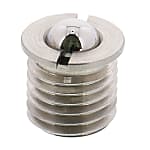


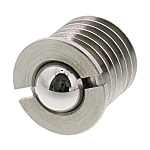
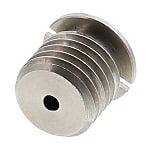
MISUMI
- Ball Plungers-Flanged Type
- Part number including type FBPJ and FBPJS.
- Main Body Hardness: 29~35HRC.
- Main Body Material can select Carbon Steel S45C or Stainless Steel SUS303.
- Main Body Surface treatment: Back oxide
- Ball Material: Stainless Steel SUS440C.
- Ball Heat Treatment : Hardening
- Ball Hardness: 55HRC.
- Spring Material is Stainless Steel SUS631J1.
- Mounting Method: Flanged
- Coarse Thread Size (M): 5, 6, 8, 10, 12 and 16.
- Operating temperature: -30~260°C
- Applicable Wrench: BPJG1, BPJG2, BPJG3, BPJG4 and BPJG5 following MISUMI table standard.- Volume Discount
From: ₹ 279.06 Days to Ship: Same day or more  Same day or more
Same day or more
-
Economy series
You can add up to 6 items per a category to the compare list.
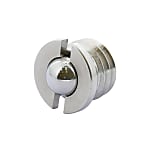 MiSUMi Economy
MiSUMi EconomyBall Plungers Flanged【10-20 Pieces Per Package】
MiSUMi EconomyMISUMI
- Economy series Ball Plungers Flanged
- Part number are series: C-FBPJ and C-FBPJS.
- Main Body Material: Steel S45C and Stainless Steel SUS303.
- Main Body Material surface treatment: Zinc-Plated (Black) for only C-FBPJ type.
- Ball Material: SUS440C.
- Ball Hardness: 52HRC.
- Spring Material: Stainless Steel SUS304.
- Ball Plungers Mounting Method: Flanged.
- Coarse Thread Size (M): 5, 6, 8 and 10.
- Initial Load (Range): 0.01~50 N.
- Package Quantity: 10 and 20 PCS (Please check before order)
- The thickness of the plunger from the plate can be fixed with a flange.- Volume Discount
From: ₹ 111.05 Days to Ship: Same day  Same day
Same day
| Brand |
|---|
| Product Series |
| CAD |
| From |
| Days to Ship |
| Specifications |
| Mounting Method |
| Outer Dia. M(mm) |
| Stroke S(mm) |
| Tip Material |
| Body Material |
| Lock |
| Initial Load (Range)(N) |
| Tip Heat Treatment |
| Main Body Surface Treatment |
| Tip Surface Treatment |
You can add up to 6 items per a category to the compare list. | You can add up to 6 items per a category to the compare list. | |
| Brand | MISUMI | MISUMI |
| Product Series | ||
| CAD |
|
|
| From | ₹ 279.06 | ₹ 1,431.00 |
| Days to Ship | Same day or more | Same day |
| Specifications | ||
| Mounting Method | Flanged | Flanged |
| Outer Dia. M(mm) | 5 ~ 16 | 5 ~ 10 |
| Stroke S(mm) | 0.8 ~ 3.2 | 0.8 ~ 1.9 |
| Tip Material | Stainless Steel | Stainless Steel |
| Body Material | Steel / Stainless Steel | Steel / Stainless Steel |
| Lock | Not Provided | Not Provided |
| Initial Load (Range)(N) | 0.01~50 | 0.01~50 |
| Tip Heat Treatment | Hardening | Not Provided |
| Main Body Surface Treatment | Not Provided / Black Oxide | Not Provided / Others |
| Tip Surface Treatment | Not Provided | Not Provided |
Loading...
Configure
Specification/Dimensions
-
Outer Dia. M(mm)
-
Stroke S(mm)
-
Tip Material
- Steel
- Stainless Steel
- Plastic
- Others / Ceramics
-
Body Material
- Steel
- Stainless Steel
- Plastic
- Others
-
Lock
- Not Provided
- Provided
-
Initial Load (Range)(N)
-
Tip Heat Treatment
-
Main Body Surface Treatment
-
Tip Surface Treatment
Related Categories to Ball Plungers
FAQ Ball Plungers
- Question: What is a ball plunger?
- Answer: A ball plunger is a mechanical device that uses a spring-loaded ball to provide positive contact between two mating surfaces. It is typically used to position, align, and lock components in a wide range of industrial applications. Ball plungers are available in a variety of sizes and configurations, making them suitable for a wide range of applications.
- Question: Why choose MISUMI ball plungers?
- Answer: MISUMI ball plungers are a popular choice for a variety of industrial applications due to their high quality, durability, and reliability. These products are made by leading Asian manufacturers, and we carefully select them as per our customers' requirements. They are also available in a wide range of sizes and configurations to meet the needs of a variety of applications.
- Question: How does a ball plunger work?
- Answer: A ball plunger consists of a threaded body, a spring, and a ball. The ball is held in place by the spring, which pushes it against the mating surface. When pressure is applied to the ball plunger, the spring compresses and the ball is retracted. This allows the two mating surfaces to move relative to each other. Once the pressure is released, the spring expands, and the ball is pushed back into contact with the mating surface.
- Question: What are the different types of ball plungers?
- Answer:
There are many different types of ball plungers available, each with its own unique features and benefits. Some of the most common types of ball plungers include:
Spring-loaded ball plungers: These are the most common type of ball plunger. They are available in a wide range of sizes and configurations and can be used for a variety of applications.
Heavy-duty ball plungers: These ball plungers are designed to withstand heavy loads and demanding environments. They are typically made from durable materials such as stainless steel or hardened steel.
Precision ball plungers: These ball plungers are designed to provide precise positioning and alignment. They are typically made from high-quality materials and are manufactured to tight tolerances. - Question: What are the benefits of using ball plungers?
- Answer:
Ball plungers offer a number of benefits, including:
Precise positioning and alignment: Ball plungers can be used to achieve precise positioning and alignment of components. This is due to the fact that they provide positive contact between the two mating surfaces.
Secure locking: Ball plungers can also be used to securely lock components in place. This is due to the fact that the spring-loaded ball provides a constant force against the mating surface.
Easy installation and use: Ball plungers are easy to install and use. They are typically threaded into a hole in the workpiece and can be tightened or loosened with a wrench.
Durability: Ball plungers are made from durable materials and can withstand demanding environments. This makes them ideal for use in a wide range of industrial applications. - Question: What are some common applications for ball plungers?
- Answer:
Ball plungers are used in a wide range of industrial applications, including:
Machine tools: Ball plungers are used in machine tools to position and align workpieces.
Molding and casting: Ball plungers are used in molding and casting operations to position and align mold cores and cavities.
Assembly: Ball plungers are used in assembly operations to position and align components during assembly.
Robotics: Ball plungers are used in robotics to position and align grippers and other end-of-arm tools.
Medical devices: Ball plungers are used in medical devices to position and align components such as needles and surgical instruments. - Question: How to install and use a ball plunger?
- Answer:
To install and use a ball plunger, follow these steps:
Thread the ball plunger into a hole in the workpiece.
Tighten the ball plunger until it is snug.
Apply pressure to the ball plunger to position or lock the component in place.
Once the component is in place, release the pressure on the ball plunger. - Question: What to do if ball plunger is not working propery?
- Answer:
If a ball plunger is not working properly, there are a few things you can check:
1. Make sure that the ball plunger is properly installed.
2. Make sure that the ball plunger is not damaged.
3. Make sure that the ball plunger is the correct size for the application.
4. Make sure that the ball plunger is made of the correct material for the environment in which it is being used.










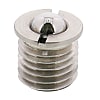
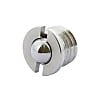

How can we improve?
How can we improve?
Thank you for your time.
Your feedback is essential for our continuous improvement
Privacy Policy
Thank you for your cooperation.
Thank you for your time.
Your feedback is essential for our continuous improvement
Please use the inquiry form.
Privacy Policy